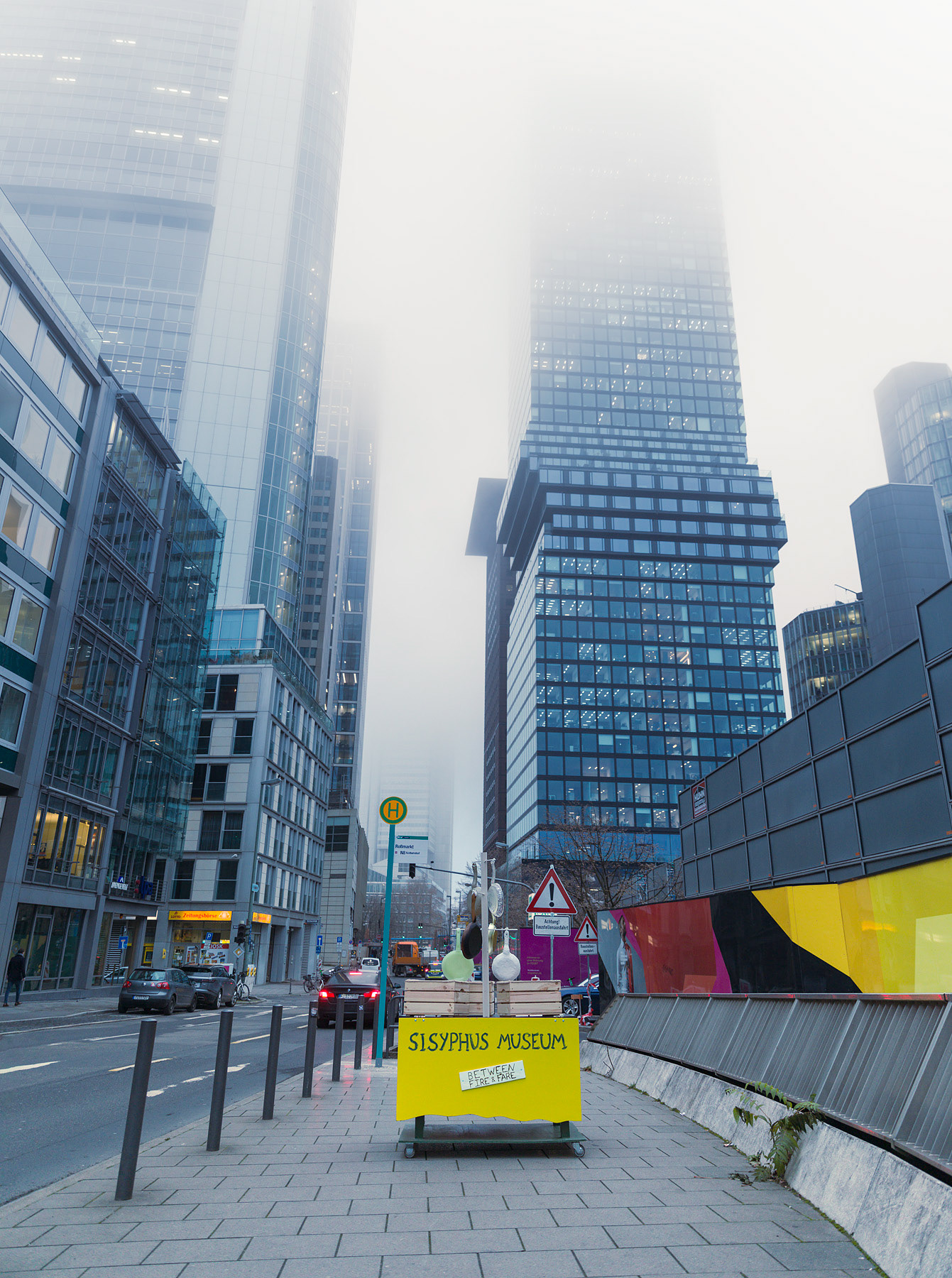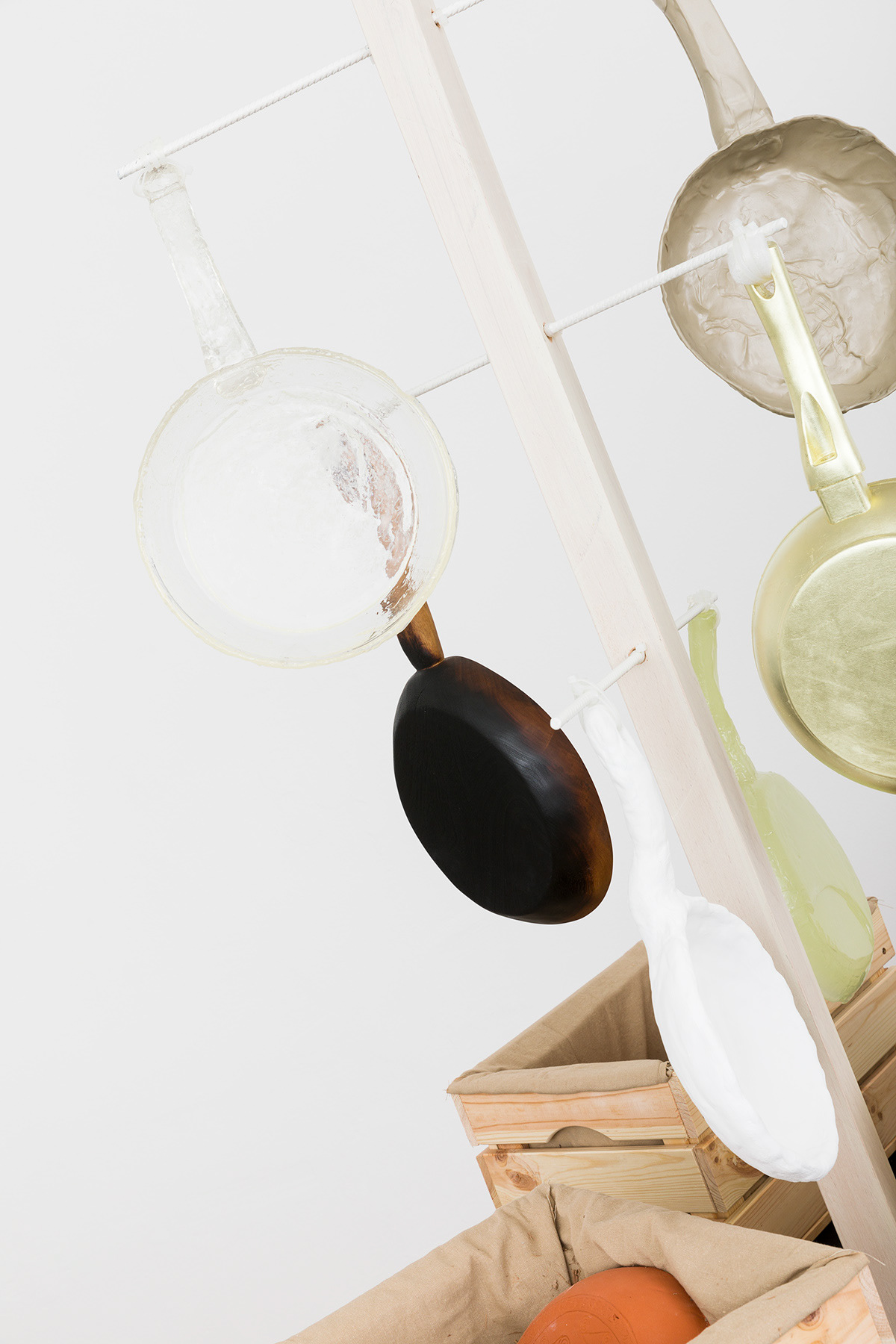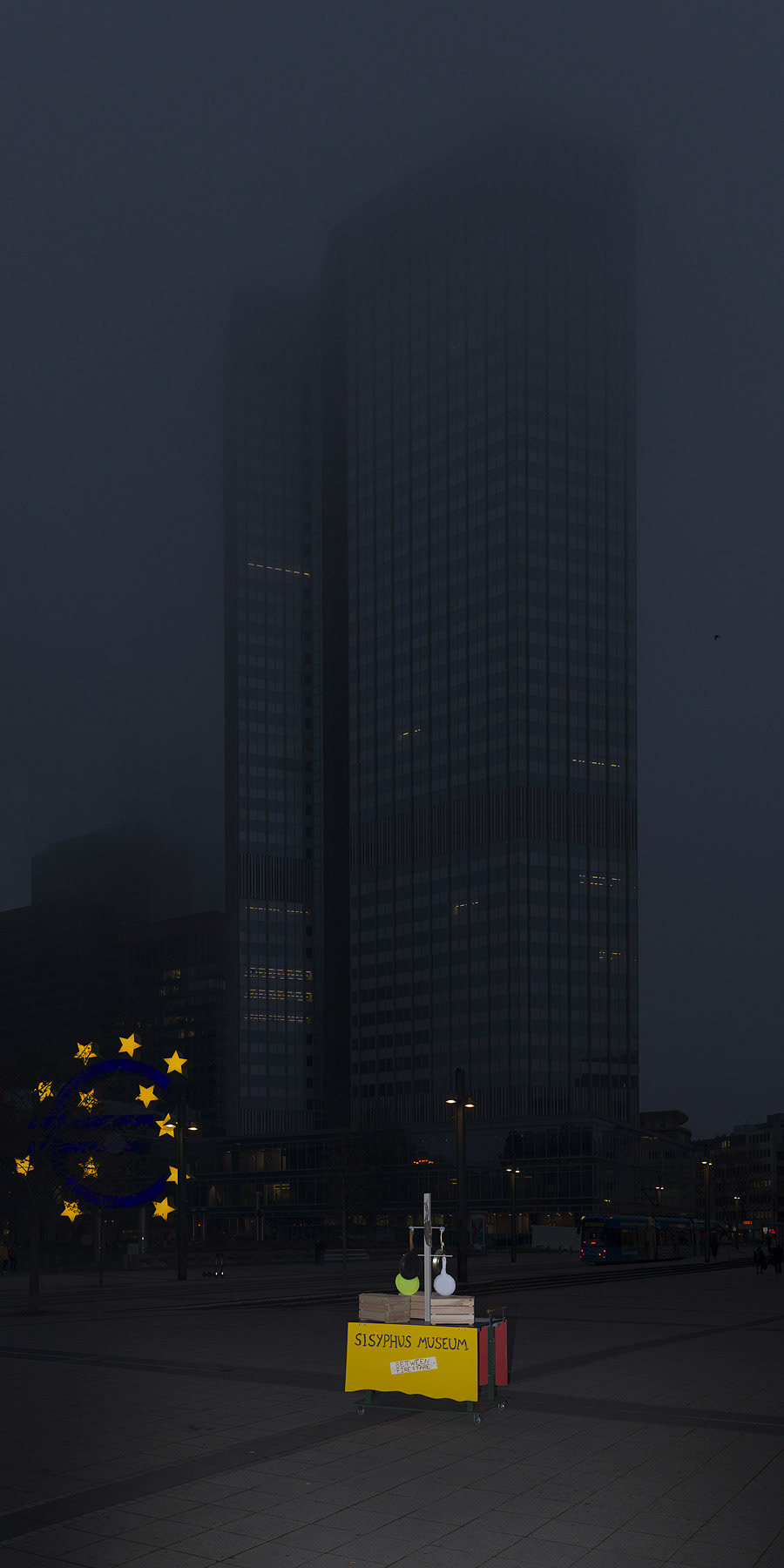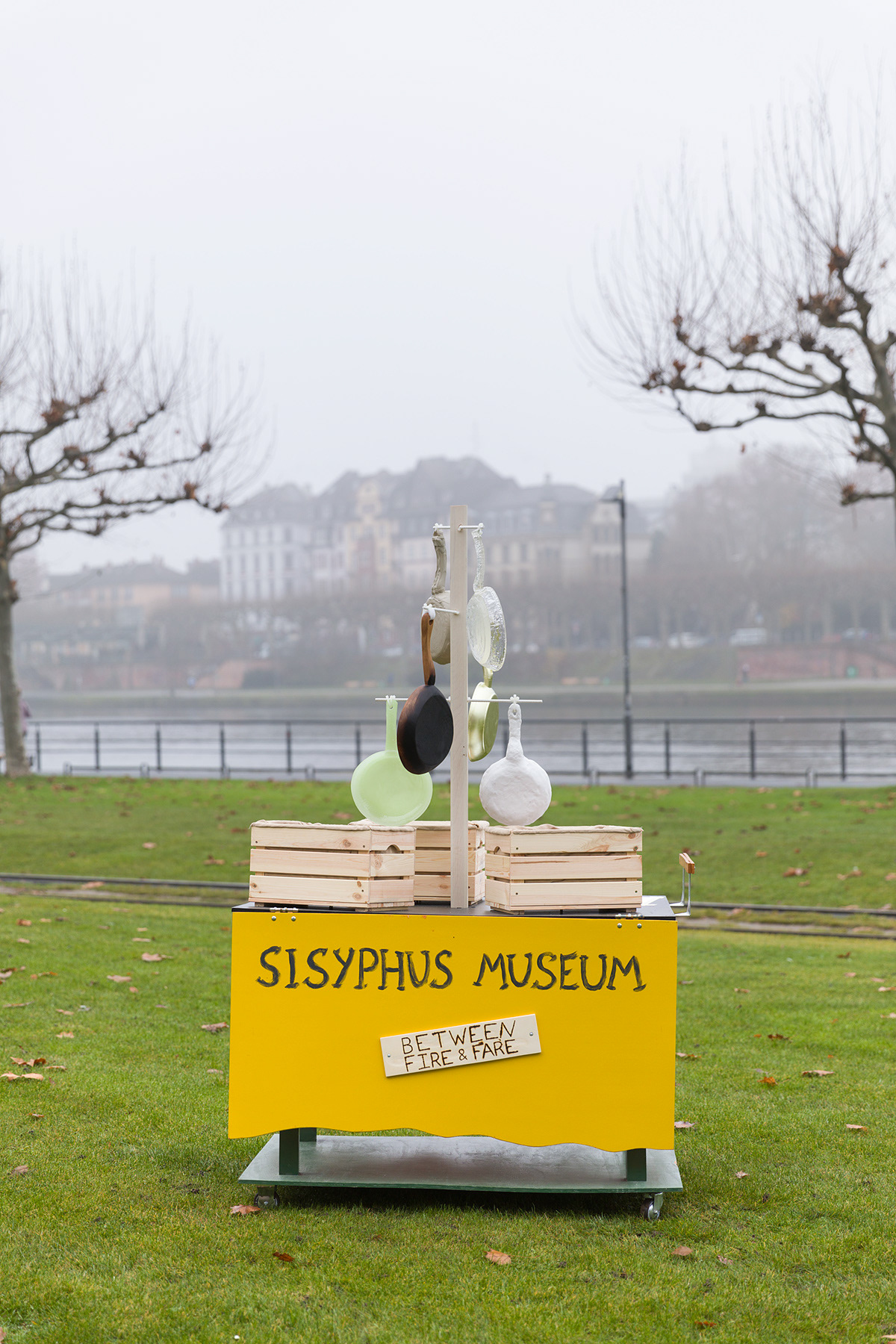Between fire & fare
text by Louisa Behr
Between fire and fare: Kitchen tools appear as the tie between ingredients and a hearth in order to cook a meal. Some of them seem like they will always have their purpose and have always been in use throughout the past. Compared to archaeological finds from ancient times the shapes have barely changed – especially concerning the pan: the ancient pans, as well our contemporary ones, consisted of a so-called body, a base and a handle. In our current, rapidly changing times, it is hardly imaginable that there is an existing human-made object that stayed the same over decades. Obviously, the material changed, but the usage did not. Likewise, the pans on display in Ivan Murzin’s exhibition, vary in their shape, material and size. Is the artist suggesting different associations of an object that has hardly changed over thousands of years? Are there more objects essential to our daily life, like the pan, but don’t change unlike most phenomena in these rapidly changing times? Between fire and fare implies a reflection on relationships between us humans and these particular objects that accompany us daily, but which nevertheless remain largely unnoticed.
Ivan Murzin describes Between fire and fare as the most direct and determined show Sisyphus Museum hosted so far. It is what it is. A collection of pans made of different materials - an almost obsessive dedication to this very kitchen utensil. He built pans that are supposed to refer to one from ancient times. Furthermore, he used materials such as wood, plastic, gold or fluorescent resin – those pans would burn or melt if they were placed on a hot plate or over a gas flame, and therefore these models are unusable. Even though the used materials are not conventional for pans, they serve as a medium themselves – the artist refers to the materials as a medium or a transmitter for communicating certain messages.
A parallel could be drawn between art movements from the past, like Dadaism for example, where the rejection of logic and the expression of irrationality was the key to artistic practices. Ivan Murzin takes his knowledge about the development of previous generations of artists as a source for his own practice. In his own conceptual process, the artist usually works with different media and translated this approach as well for the Sisyphus Museum. As part of the concept, each of the previous exhibitions was devoted to materials he had around in his studio or to a different medium, including photography and film. Between fire and fare was dedicated to the sculptural.
Still the artist continues his inherent occasional humorous and parodic approach, which serves as a method to his practice. He likes to think of it as spices for a meal: It gives it a particular kick, but it is the combination of all ingredients that makes the meal whole. The exhibition specifically suggests one of the indications of Sisyphus Museum: to be direct. This is an exhibition, which is dedicated to the pan itself as an object passing through time. Humor is apparent, but one can only guess about the meaning of it. Absurdity and paradoxes of the artworks draw parallels to Dadaism or even Giovanni Battista Tiepolo and his series “Vari Capricci” (1739-43) – there is a dialogue between them even though it is different media and different times. Still, something is passing through time – like the pans in Between fire and fare as a representative for the mediality of things surrounding us through time.
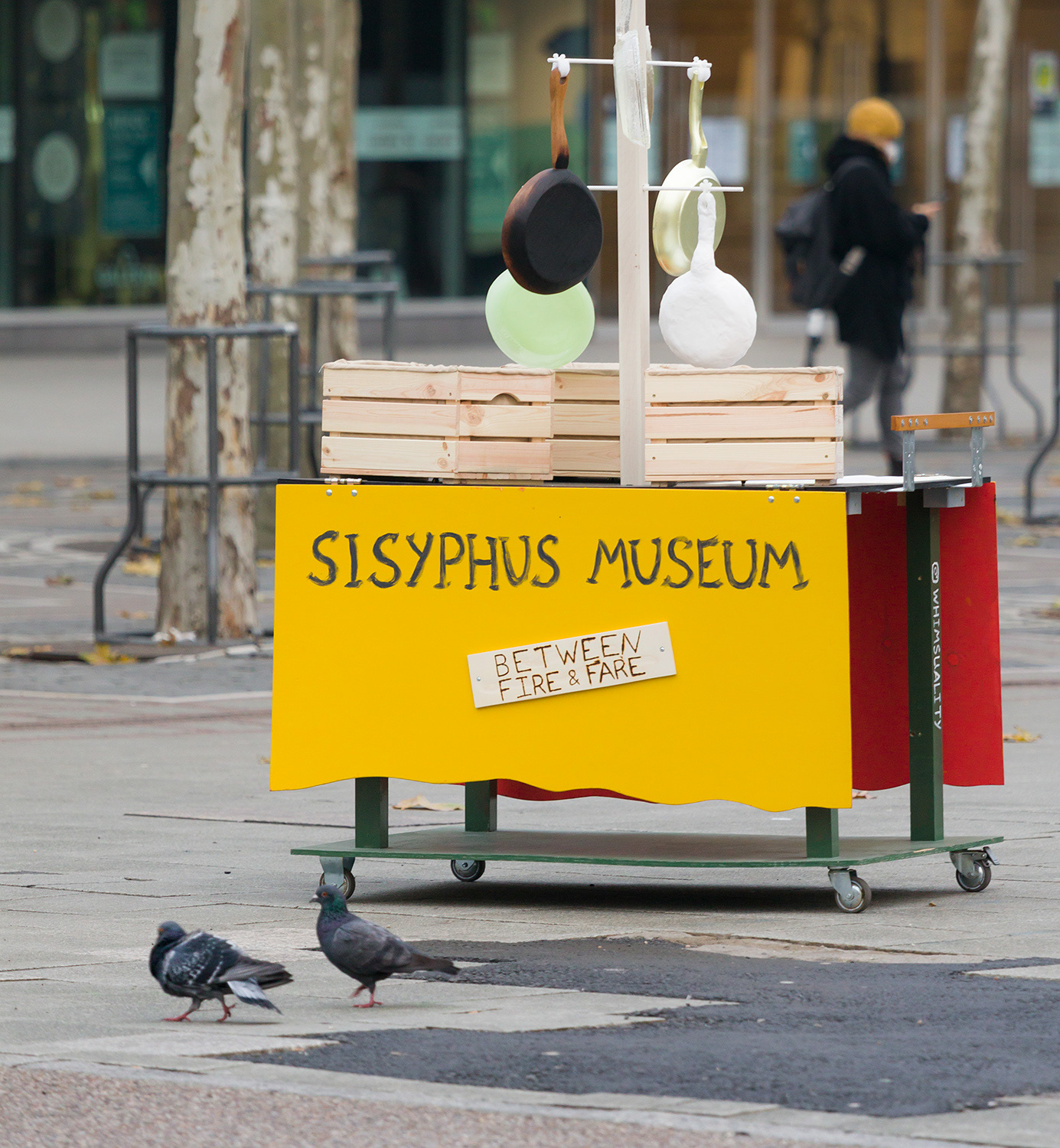
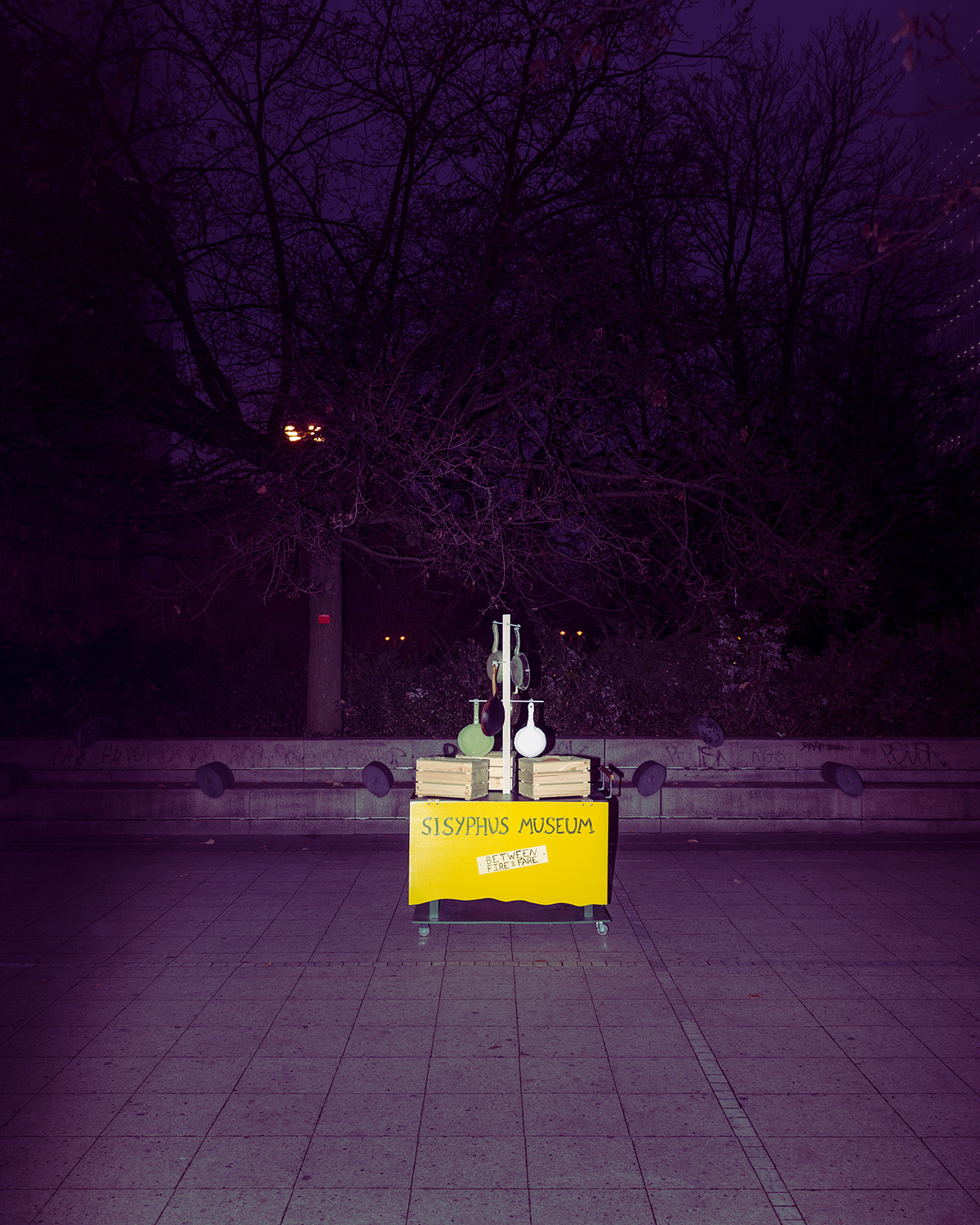
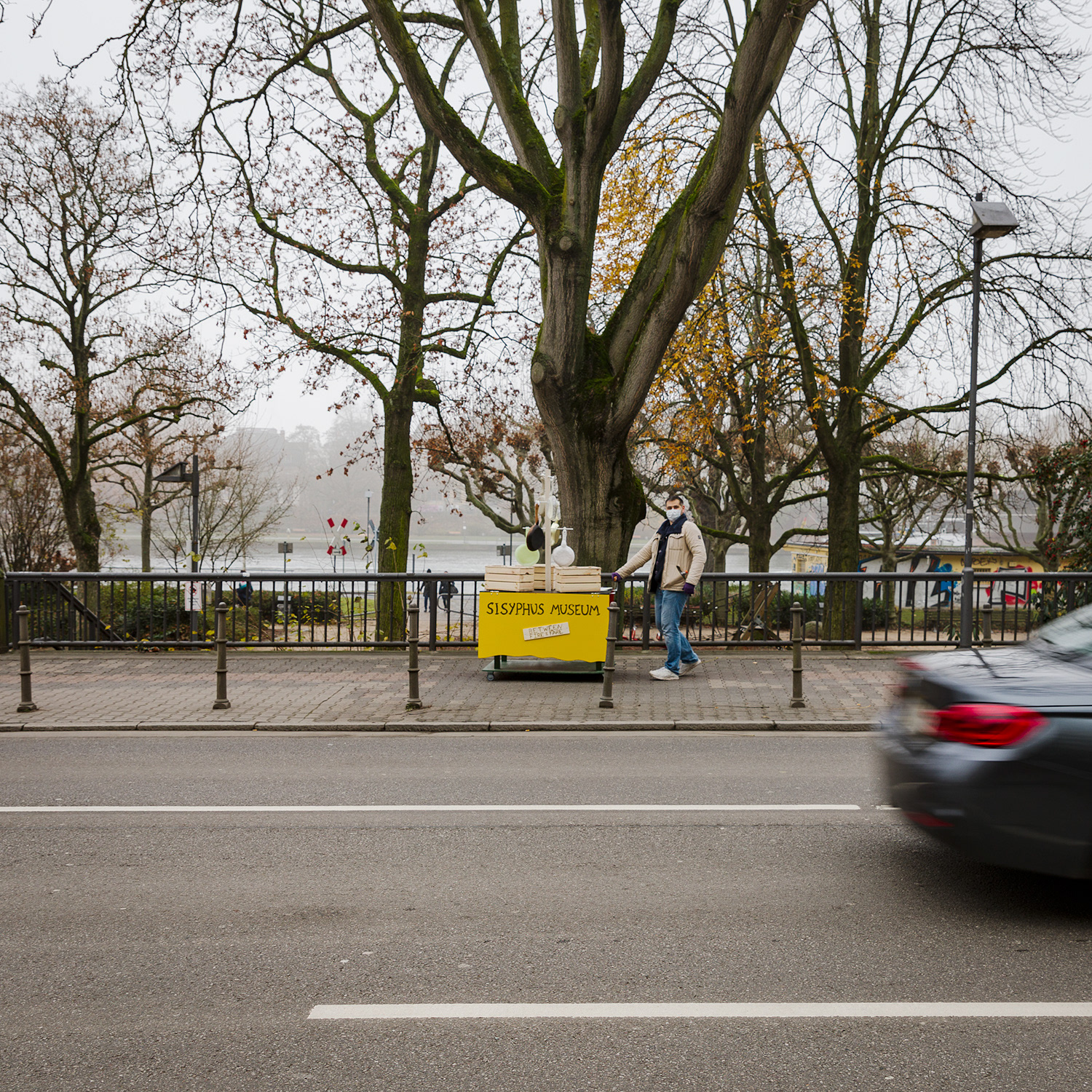
For Ivan Murzin, "cooking" has already been a current topic in his artistic practice, and there are references to a past project. During his studies at the Städelschule, the artist worked for a long time in the school's canteen kitchen and made these experiences the starting point for the large-scale project "Eduard Teachev" (2015-2016). There are connections between cooking and the tools for it and also a strong reflection on what tools actually mean to us. Cooking and art also exemplify an inherent contradiction, because cooked food is intended for immediate consumption and not long-term existence. On the other hand, art still often claims to be a testimony to eternity - works of art are preserved and restored. Cooking has a different attitude; food doesn't exist longer, whereas artworks do. There is a contrast between and a reflection on the duration, the results and the importance. The pan also represents this very relationship: something that is quickly gone is made with the help of an object that remains the same for thousands of years. In this respect, the exhibition implies not least contrasts that are present in many of Ivan Murzin's comprehensive projects.
In a time when many things seem to be closer and smaller than usual, because our radius of movement is reduced and we spend more time than we used to within our four walls, the world seems to be limited. The pan as a kitchen utensil acts as a symbol for the small area in which we currently mainly linger around, and at the same time, it reflects solid stability. Because the pan remains what it is - the one from ancient times serves as a testimony for this idea.
